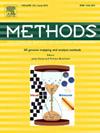A transferability-guided protein-ligand interaction prediction method
IF 4.2
3区 生物学
Q1 BIOCHEMICAL RESEARCH METHODS
引用次数: 0
Abstract
Accurate prediction of protein–ligand interaction (PLI) is crucial for drug discovery and development. However, existing methods often struggle with effectively integrating heterogeneous protein and ligand data modalities and optimizing knowledge transfer from pretraining to the target task. This paper proposes a novel transferability-guided PLI prediction method that maximizes knowledge transfer by deeply integrating protein and ligand representations through a cross-attention mechanism and incorporating transferability metrics to guide fine-tuning. The cross-attention mechanism facilitates interactive information exchange between modalities, enabling the model to capture intricate interdependencies. Meanwhile, the transferability-guided strategy quantifies transferability from pretraining tasks and incorporates it into the training objective, ensuring the effective utilization of beneficial knowledge while mitigating negative transfer. Extensive experiments demonstrate significant and consistent improvements over traditional fine-tuning, validated by statistical tests. Ablation studies highlight the pivotal role of cross-attention, and quantitative analysis reveals the method’s ability to reduce harmful transfer. Our guided strategy provides a paradigm for more comprehensive utilization of pretraining knowledge, offering prospects for enhancing other PLI prediction approaches. This method advances PLI prediction via innovative modality fusion and guided knowledge transfer, paving the way for accelerated drug discovery pipelines. Code and data are freely available at https://github.com/brian-zZZ/Guided-PLI.
一种可转移性导向的蛋白质-配体相互作用预测方法
准确预测蛋白质-配体相互作用(PLI)对药物发现和开发至关重要。然而,现有的方法往往难以有效地整合异质蛋白质和配体数据模式,并优化从预训练到目标任务的知识转移。本文提出了一种新的可转移性指导的PLI预测方法,该方法通过交叉注意机制深度整合蛋白质和配体表征,并结合可转移性指标来指导微调,从而最大化知识转移。交叉注意机制促进了模式之间的交互信息交换,使模型能够捕获复杂的相互依赖关系。同时,可迁移性引导策略量化了预训练任务的可迁移性,并将其纳入训练目标中,保证了有益知识的有效利用,同时减少了负迁移。广泛的实验表明,与传统的微调相比,显著和一致的改进得到了统计测试的验证。消融研究强调了交叉注意的关键作用,定量分析揭示了该方法减少有害转移的能力。我们的指导策略为更全面地利用预训练知识提供了一个范例,为增强其他PLI预测方法提供了前景。该方法通过创新的模式融合和引导知识转移来推进PLI预测,为加速药物发现管道铺平了道路。代码和数据可在https://github.com/brian-zZZ/Guided-PLI免费获得。
本文章由计算机程序翻译,如有差异,请以英文原文为准。
求助全文
约1分钟内获得全文
求助全文
来源期刊

Methods
生物-生化研究方法
CiteScore
9.80
自引率
2.10%
发文量
222
审稿时长
11.3 weeks
期刊介绍:
Methods focuses on rapidly developing techniques in the experimental biological and medical sciences.
Each topical issue, organized by a guest editor who is an expert in the area covered, consists solely of invited quality articles by specialist authors, many of them reviews. Issues are devoted to specific technical approaches with emphasis on clear detailed descriptions of protocols that allow them to be reproduced easily. The background information provided enables researchers to understand the principles underlying the methods; other helpful sections include comparisons of alternative methods giving the advantages and disadvantages of particular methods, guidance on avoiding potential pitfalls, and suggestions for troubleshooting.
 求助内容:
求助内容: 应助结果提醒方式:
应助结果提醒方式:


